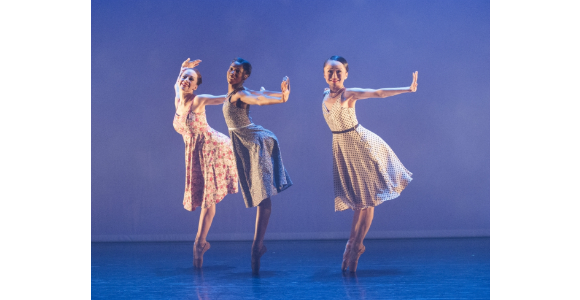Ballet Black – Linbury Studio Theatre, Royal Opera House, London
6th March 2013
Reviewed by: Rebecca Ounstead
Sitting within sweat sniffing distance, I still couldn’t consider these dancers as human beings not too unlike myself. Their lean lengthy limbs, sheathed in firm hairless, healthy flesh, musculature prominent. A faint outline of occasionally provoked nipples being one of the only features reminding you that these dancers have real bodily functions and juices.
The first choreography by Robert Binet featured two black dancers in navy shorts and t-shirt not too dissimilar from a primary school PE kit. The facial contours of the female dancer and striking, yet somehow fervently rigid movement reminding me of a young Grace Jones. The dance exploring the battle of love and lust between two equally head strong, decisive and emotional beings, leading to unpredictable, jutting movements between swathes of lengthy arms and teetering feet. Not directly presenting an outcome, but showcasing a trajectory of their relationship together. The simplicity of stage lights and costume design resulted in a heavily exemplified and incredibly emotional composition, like watching two puppets fighting with a new found lease of human feeling and thought. The infrequent squeaks of the leather during pirouettes and drag moves, anchored the piece in a raw, no fuss policy and a beautiful composition of movement.
The two figures on stage became completely a-sexual, attempting a rare concept in a ballet context; for the two dancers to become equal to each other. The female dancers’ minute breasts enabled the male dancer to accomplish the aerial moves by placing his hands any place on her torso. The minimal costume in its attempt to draw no comparisons between dancers niggled at me throughout the performance. Through my slow tears and slight submission to emotional mush, the length of short kept getting my goat – why if the costumes purpose was to equate a genderless equality were hers specifically a more flattering ‘ladies cut’ and his a longer knee skimming version? His package clearly tightly and appropriately encased did not seem in danger of any exposure, so why the longer length short? Albeit somewhat petty, it did become quite distracting. Rant over, I have to admit the androgyny enabled the mind to drift even further and begin to think of the dancers as interactive sculptures; activated by motion sensors, multiple minuscule magnets and an industrial strength wind machine. The emotive power of the work was overwhelming; I began to wonder how I could ever expect to make an artwork that made the viewer react in the same way. I was brought to tears, tears that were initially jerked by the beauty and complexity of the dancers themselves.
I sighed in relief and slight emotional exhaustion, the first choreography was just 15 minutes. My mind left racing with the endless possibilities of choreography and performer as sculpture itself.
In opposition to the success of the nearly genderless first piece, the second choreographed by Ludovic Ondiviela, introduced a coy, eyelash fluttering flirt fest between, female Japanese dancer Sayaka Ichikawa and strikingly tall and dominant, yet tender faced male dancer Jazmon Voss. Cute as kittens in socks Ichikawa playfully jested with Voss. A love story, not out of place written on Hello Kitty note paper, involved two love struck young beings almost encircling each other in a mating call manner. It was desperately sweet and skilfully delivered, my interest focussed on the cultural connections to Ichikawa’s Asian heritage and the coy, innocent character she portrayed. It made me think of the female androids in Wong Kar Wai’s 2046. Whether the choreographer wanted to reference and / or play on the idea of Kawaii I am still not sure.
The third choreographed by Javier de Frutos comprised of four dancers with a score of exotic Hawaiian songs, performed in a barbershop quartet style. Throwing me into Elvis Presley’s Blue Hawaii the costumes reflected the tropical colours, although strangely, yet feasibly, looking as if they had swapped clothes rails with Dancing On Ice on route. Inventively the choreography references the lyrics of the songs and the songs origins, with tender yet sexy hula hips and surfing wave arm gestures. This piece seemed sickeningly sweet after the previous performances, but I actually liked that. The ability for ballet to interpret something so surely different was to say the least ambitious. I was just missing my Mai Tai.
Overall an incredibly passionate, no nonsense approach to an intricate and widely diverse art form.

